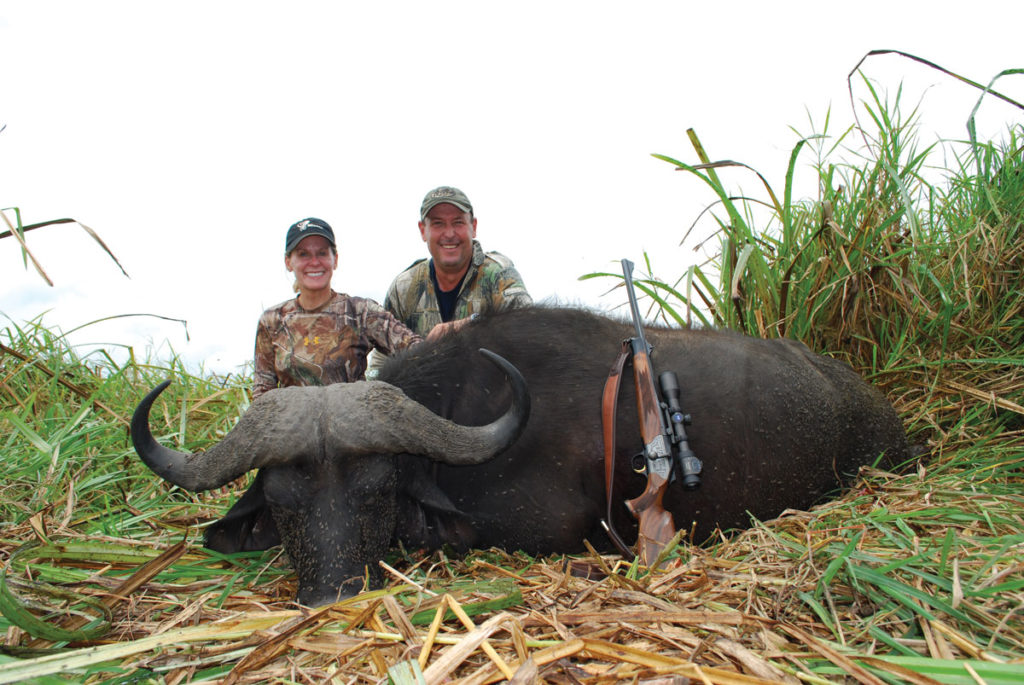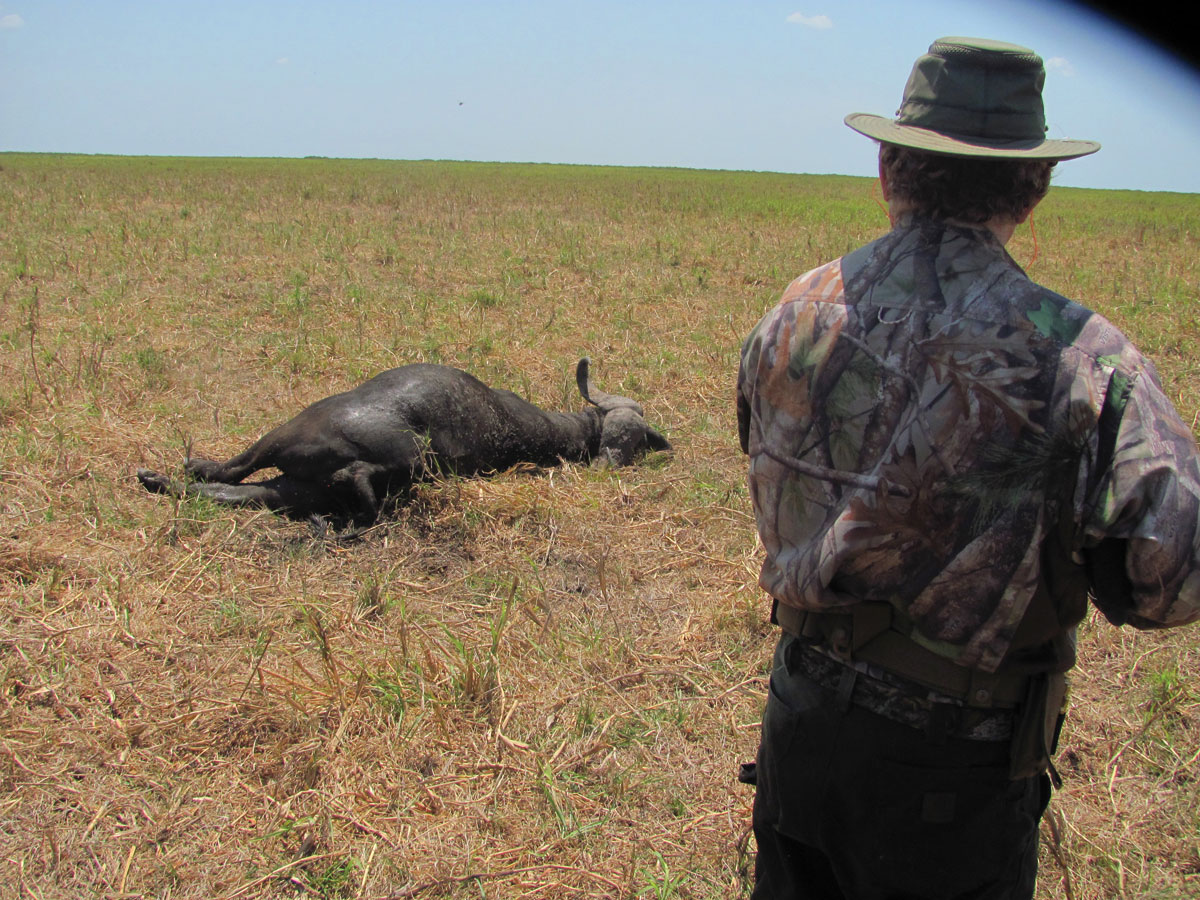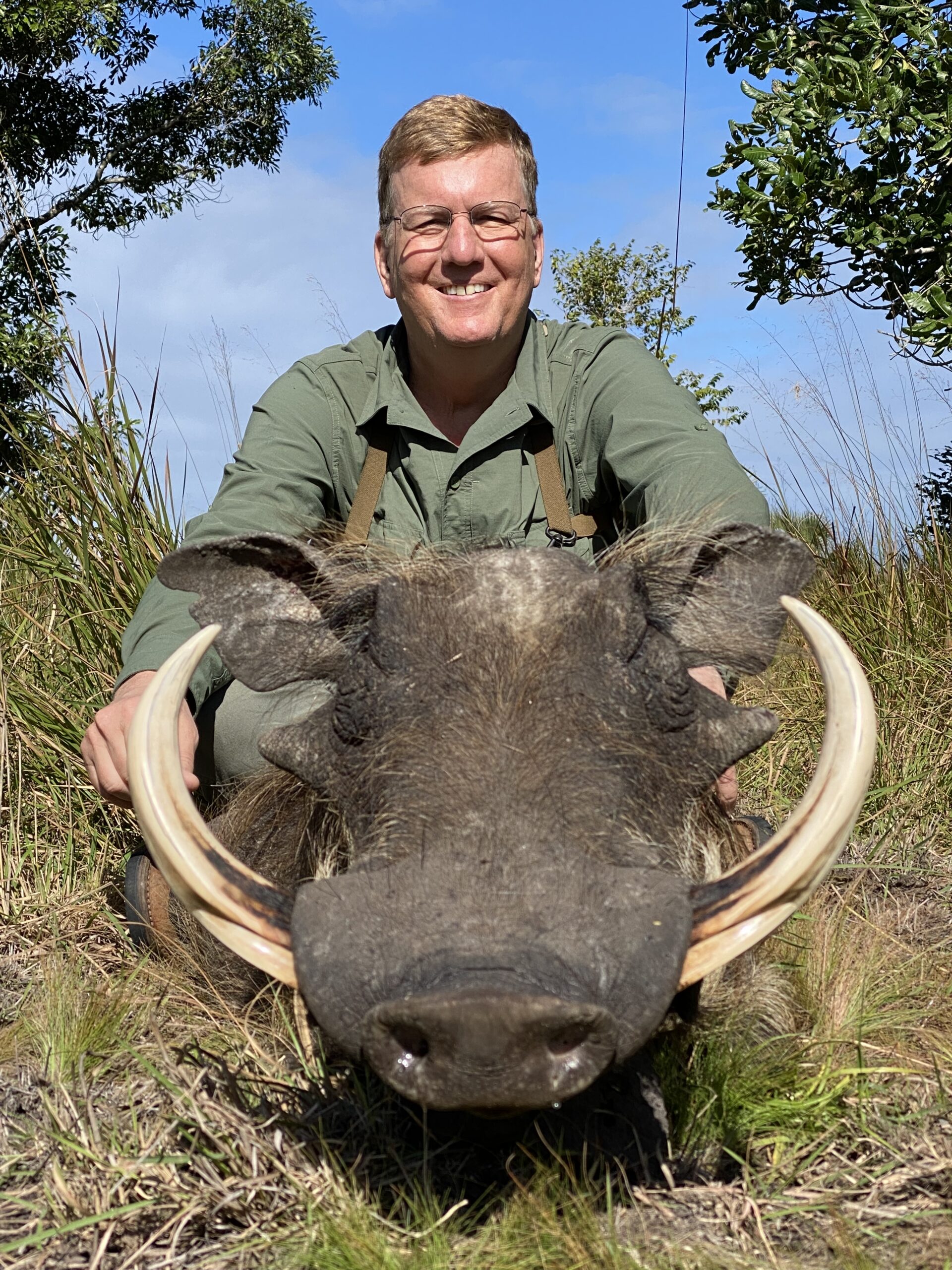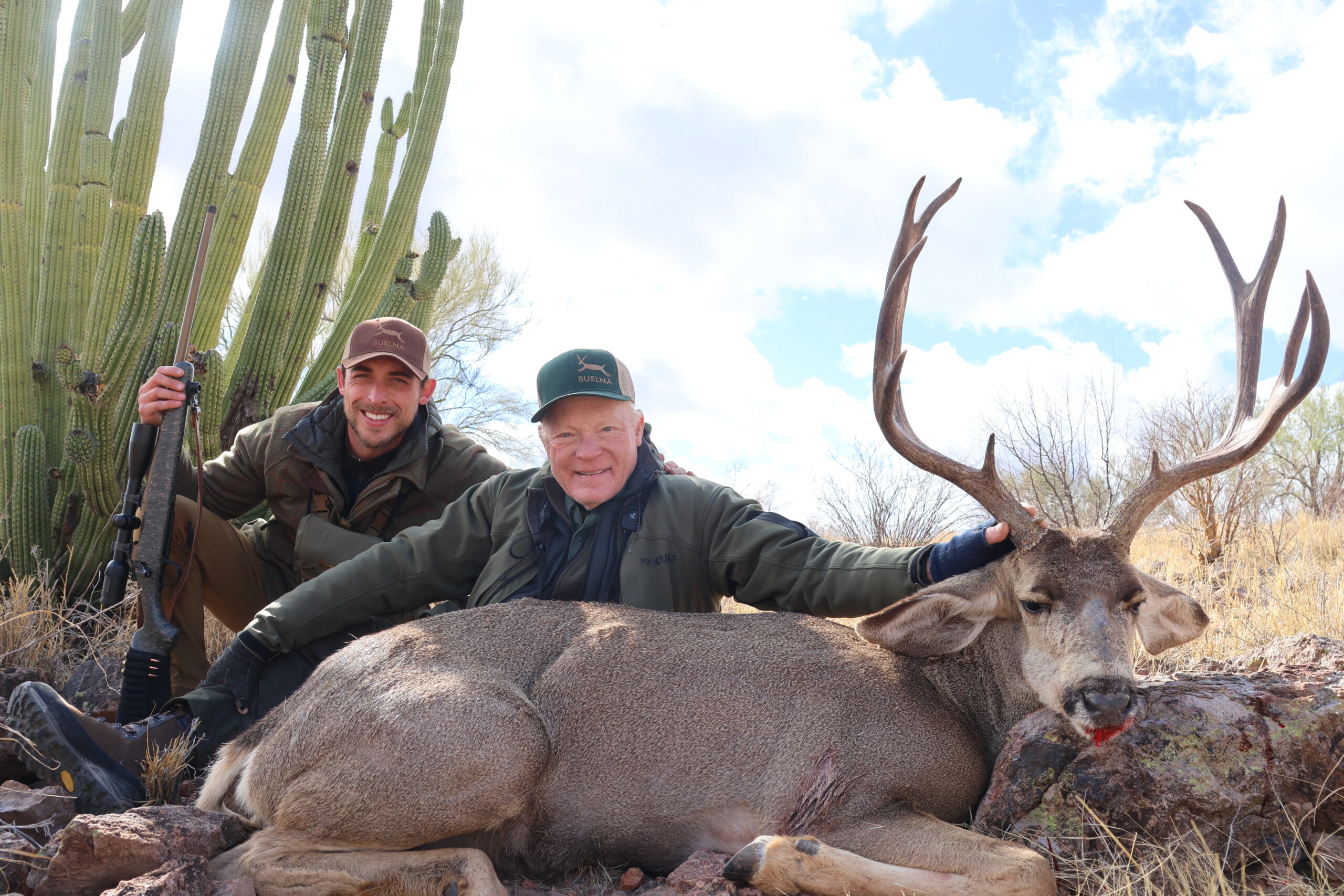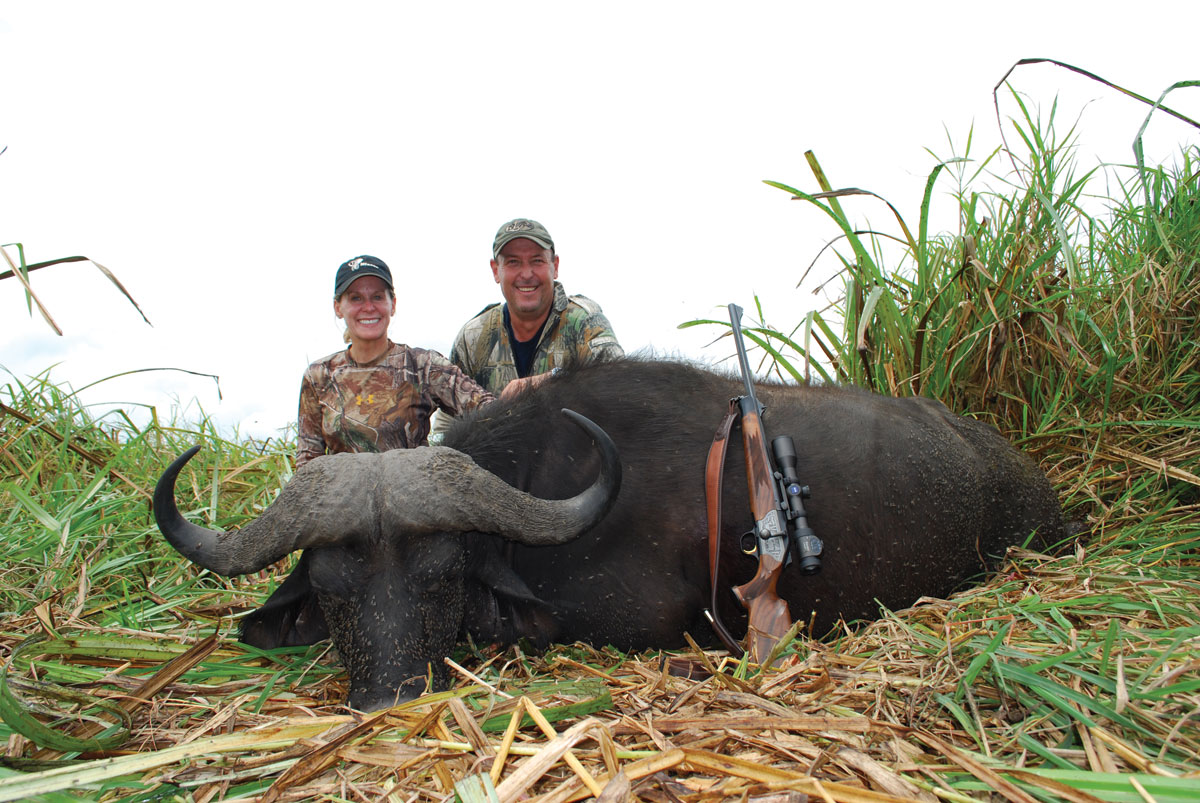 BELL AND STIGAND
BELL AND STIGAND
The .375 is not actually the legal minimum in all jurisdictions; the actual minimum is often the 9.3mm (caliber .366). I’ve taken a few buffalo with 9.3mms and seen quite a few others taken, and it works just fine. So does the .338 with a good 250-grain bullet. But we’ve had “minimum calibers” pounded into our heads for so long that it’s easy to forget where the argument came from.
In the 1890s, the parallel developments of smokeless powder and jacketed bullets made possible both velocity and penetration unimaginable in the blackpowder era. The early smokeless cartridges were military ones between 6.5mm (.264-inch) and 8mm (.323-inch), and the military bullets initially in vogue were heavy-for-caliber, round-nosed, full-metal-jacketed slugs. According to early proponents of these “small bores”—hunters such as C.H. Stigand and Karamoja Bell—they worked amazingly well.
One of the first was the 6.5x53R, a little rimmed cartridge firing a 156-grain bullet. Initially adopted by the Romanian military in 1893 and later the Dutch, it became very popular in Africa. On that same Mozambique buffalo hunt just described, my friend Bill Jones had with him a really nice Holland & Holland single shot, chambered to 6.5x53R and delivered in 1898 to none other than Frederick Courteney Selous. It turns out that Mozambique is one of relatively few African jurisdictions that does not have minimum calibers in her game laws. This has made it a popular destination for handgunners and bowhunters…and it meant that Bill could try his Selous rifle on a buffalo.
We all thought this was a bit crazy, but we agreed to give it a go…hoping for an ideal presentation and plenty of open ground! A buddy of Bill’s, Corbin Shell, necked down .303 British for brass and loaded up some CEB 155-grain flat-point homogenous alloy solids at a modest velocity of 2,325 fps.
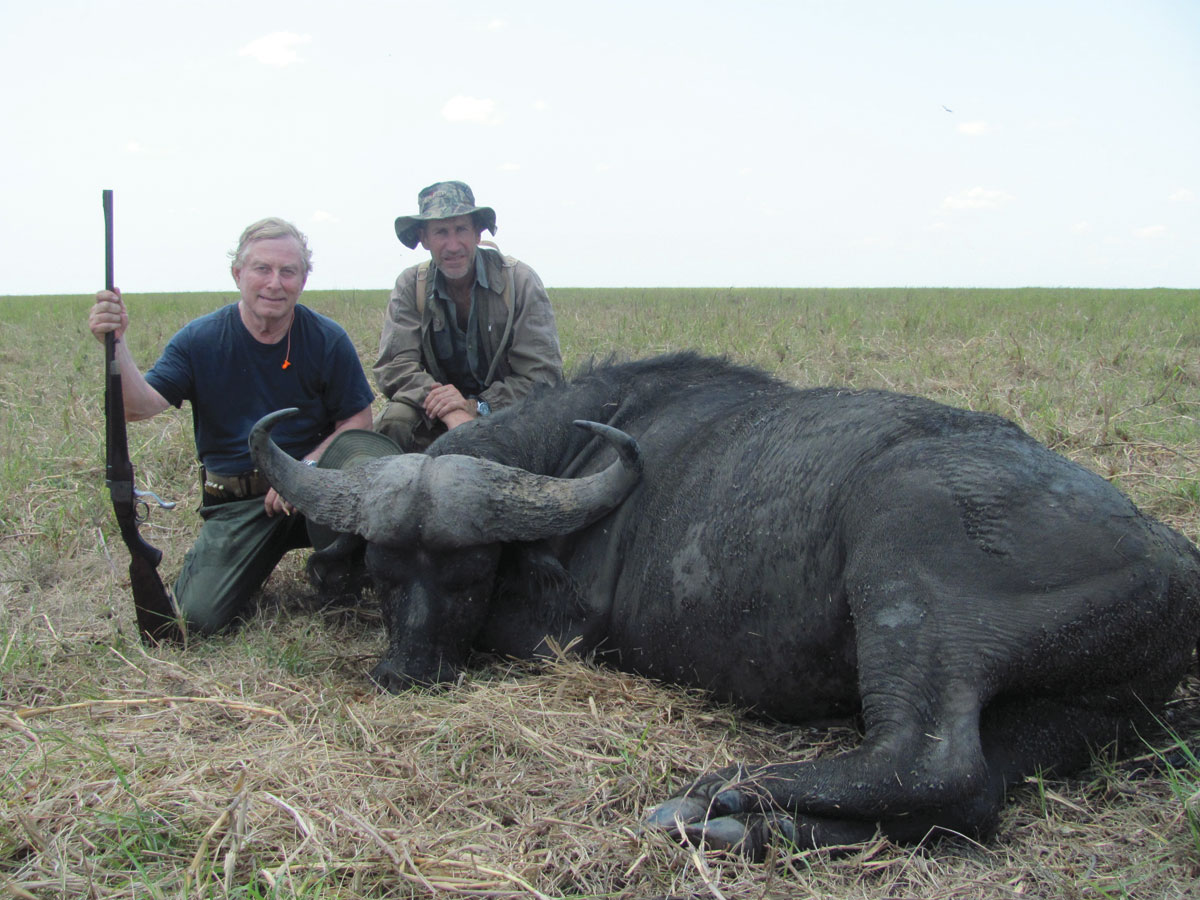 It took quite a bit of crawling, but Craig Hamman got Bill a clean broadside shot at about 70 yards. The report of that little rifle is as mild as the recoil, and the bullet hit with an odd slapping sound. He turned immediately into the herd, so no backup shot was possible. The herd moved maybe 100 yards in open ground, then turned. We could quickly pick out Bill’s bull from blood on his nose, but before a second shot opened up he lay down…and the herd moved off and left him there. Bill shot him again, a sensible precaution, but he was truly not going anywhere. That little bullet entered centrally right behind the shoulder…and exited the same place on the opposite side!
It took quite a bit of crawling, but Craig Hamman got Bill a clean broadside shot at about 70 yards. The report of that little rifle is as mild as the recoil, and the bullet hit with an odd slapping sound. He turned immediately into the herd, so no backup shot was possible. The herd moved maybe 100 yards in open ground, then turned. We could quickly pick out Bill’s bull from blood on his nose, but before a second shot opened up he lay down…and the herd moved off and left him there. Bill shot him again, a sensible precaution, but he was truly not going anywhere. That little bullet entered centrally right behind the shoulder…and exited the same place on the opposite side!
This was the penetration that early hunters like Stigand, Bell and Selous raved about. It was the first time I‚Äôve seen it demonstrated on an animal as big as a buffalo, and it was an eye-opening experience. So should we forget the minimums and go back to Selous‚Äô 6.5mm or Bell‚Äôs 7×57? Uh, no, let‚Äôs not get crazy. Bill had open ground, a good presentation, and he placed his shot perfectly. There was initially no blood at all, and the bull stayed with the herd until he went down. In thick cover, that could have caused problems. The old East African Professional Hunters Association was not being arbitrary when, in the 1950s, they instituted Africa‚Äôs first ‚Äúminimum caliber‚Äù law. (In Kenya and Tanganyika, minimum of .40 caliber for thick-skinned game.)
TAYLOR
Let’s not get crazy about that, either. The .500 Jeffery I shot my buffalo with was extremely impressive. Also from Bill Jones’ collection, it’s one of just over a score of .500 Jeffery rifles made by Jeffery, and the only one that was made to order. Built in 1936 for C. Fletcher Jamieson, it is referred to several times in John Taylor’s African Rifles and Cartridges. The rifle shoots straight and handles wonderfully.
Again, one cannot read much into just one buffalo, but for many years the .500 Jeffery was the most powerful bolt-action cartridge. It is among a very small handful of cartridges (.460 Weatherby, .505 Gibbs, .577, .600 and .700 NE) that, with ideal shot placement and bullet performance, can overwhelm a buffalo.
On the other hand, it isn’t just the buffalo that can be overwhelmed. When I fired the second shot at my buffalo, my shooting arm went numb from shoulder to wrist. That shot, though totally unnecessary, also went where I wanted it—but several seconds passed before I could shake off the paralysis and prepare to fire again if needed. I should probably admit that my left shoulder hasn’t been exactly the same since a .600 doubled a while back, and a recent fall on a horse didn’t help. But with or without infirmities the recoil of the really big cartridges is at an altogether different level.  My conclusion: The .500 Jeffery is too much of a good thing, at least for me!
Most of us need to start somewhere in the neighborhood of the .375 H&H, and many of us need to stop there. With adequate gun weight and proper stock fit, most people‚ÄîDonna being a good example‚Äîcan learn to shoot a .375 H&H. But if that‚Äôs a problem, you can step down slightly to the 9.3×62, .370 Sako Magnum (also a 9.3mm), or a .376 Steyr. All are adequate for any buffalo that walks provided you place the bullet where it needs to be. Don‚Äôt kid yourself; it‚Äôs all about shot placement. Buffalo hit poorly with the really big guns can be lost, and can turn the tables.
On the other hand, if recoil and maximum versatility aren’t issues, there may be a compromise more perfect than even a .375. I was trying to take a buffalo with the Jamieson .500 Jeffery, and we were on a big herd. There was a gorgeous bull in the group, but he was beyond 100 yards and I wasn’t confident with the iron sights. Craig Hamman wisely called Bill Jones forward, and he stood to the sticks with his scoped .404 Jeffery. He quickly took a facing shot, and the bull swapped ends and ran with the herd. The herd kept running, but this bull was down and out in 40 yards, as clean a one-shot kill as you could ever hope for with a body shot.
A .375 might have done that, but I have come to believe that the .40-calibers—the several .416s, the .404 Jeffery, the .450/.400—offer the perfect compromise for buffalo, not quite as shootable or as versatile as the .375, but taking a noticeable step up in power without the bone-jarring and flinch-inducing recoil of the heavier cartridges. But since we’re talking about buffalo, whatever cartridge you choose, put a low-powered scope on the rifle, preferably with a lighted reticle. This may not be as traditional as the good old express sight, but you’ll be able to take more shots a whole lot quicker. You’ll probably place them better, and chances are you’ll wind up with a bigger buffalo.РCraig Boddington

